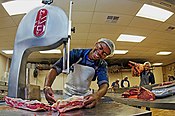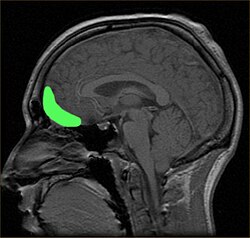Happiness is used in the context of mental or emotional states, including positive or pleasant emotions ranging from contentment to intense joy. It is also used in the context of life satisfaction, subjective well-being, eudaimonia, flourishing and well-being.
Since the 1960s, happiness research has been conducted in a wide variety of scientific disciplines, including gerontology, social psychology, clinical and medical research and happiness economics.
Definitions
'Happiness' is the subject of debate on usage and meaning, and on possible differences in understanding by culture.The word is used in several related areas:
Happy children playing in water
- current experience, including (a) the feeling of an emotion (affect) such as pleasure or joy, or (b) a more general sense of 'emotional condition as a whole'. For instance Daniel Kahneman has defined happiness as "what I experience here and now". This usage is prevalent in dictionary definitions of happiness.
- appraisal of life satisfaction, such as of quality of life. For instance Ruut Veenhoven has defined happiness as "overall appreciation of one's life as-a-whole."
- subjective well-being, which includes measures of affect and of life satisfaction. For instance Sonja Lyubomirsky has described happiness as “the experience of joy, contentment, or positive well-being, combined with a sense that one's life is good, meaningful, and worthwhile.”
- eudaimonia, which is sometimes translated as flourishing.
The implied meaning of the word may vary depending on context, qualifying happiness as a polyseme and a fuzzy concept.
Some users accept these issues, but continue to use the word because of it's convening power.
Philosophy
A butcher happily slicing meat.
In the Nicomachean Ethics, written in 350 BCE, Aristotle stated that happiness (also being well and doing well) is the only thing that humans desire for its own sake, unlike riches, honour, health or friendship. He observed that men sought riches, or honour, or health not only for their own sake but also in order to be happy. Note that eudaimonia, the term we translate as "happiness", is for Aristotle an activity rather than an emotion or a state. Thus understood, the happy life is the good life, that is, a life in which a person fulfills human nature in an excellent way. Specifically, Aristotle argues that the good life is the life of excellent rational activity. He arrives at this claim with the Function Argument. Basically, if it's right, every living thing has a function, that which it uniquely does. For humans, Aristotle contends, our function is to reason, since it is that alone that we uniquely do. And performing one's function well, or excellently, is good. Thus, according to Aristotle, the life of excellent rational activity is the happy life. Aristotle does not leave it at that, however. He argues that there is a second best life for those incapable of excellent rational activity. This second best life is the life of moral virtue.
Many ethicists make arguments for how humans should behave, either individually or collectively, based on the resulting happiness of such behavior. Utilitarians, such as John Stuart Mill and Jeremy Bentham, advocated the greatest happiness principle as a guide for ethical behavior.
Friedrich Nietzsche savagely critiqued the English Utilitarians' focus on attaining the greatest happiness, stating that "Man does not strive for happiness, only the Englishman does." Nietzsche meant that making happiness one's ultimate goal and the aim of one's existence, in his words "makes one contemptible." Nietzsche instead yearned for a culture that would set higher, more difficult goals than "mere happiness." He introduced the quasi-dystopic figure of the "last man" as a kind of thought experiment against the utilitarians and happiness-seekers. these small, "last men" who seek after only their own pleasure and health, avoiding all danger, exertion, difficulty, challenge, struggle are meant to seem contemptible to Nietzsche's reader. Nietzsche instead wants us to consider the value of what is difficult, what can only be earned through struggle, difficulty, pain and thus to come to see the affirmative value suffering and unhappiness truly play in creating everything of great worth in life, including all the highest achievements of human culture, not least of all philosophy.
Darrin McMahon claims that there has been a transition over time from emphasis on the happiness of virtue to the virtue of happiness.
Happiness may be said to be a relative concept; the source of happiness for one person might not be the source of happiness for another.
Not all cultures seek to maximise happiness, and some cultures are averse to happiness.
Religion
Eastern religions
Buddhism
Tibetan Buddhist monk
Happiness forms a central theme of Buddhist teachings. For ultimate freedom from suffering, the Noble Eightfold Path leads its practitioner to Nirvana, a state of everlasting peace. Ultimate happiness is only achieved by overcoming craving in all forms. More mundane forms of happiness, such as acquiring wealth and maintaining good friendships, are also recognized as worthy goals for lay people (see sukha). Buddhism also encourages the generation of loving kindness and compassion, the desire for the happiness and welfare of all beings.
Hinduism
In Advaita Vedanta, the ultimate goal of life is happiness, in the sense that duality between Atman and Brahman is transcended and one realizes oneself to be the Self in all.Patanjali, author of the Yoga Sutras, wrote quite exhaustively on the psychological and ontological roots of bliss.
Confucianism
The Chinese Confucian thinker Mencius, who had sought to give advice to ruthless political leaders during China's Warring States period, was convinced that the mind played a mediating role between the "lesser self" (the physiological self) and the "greater self" (the moral self), and that getting the priorities right between these two would lead to sage-hood. He argued that if one did not feel satisfaction or pleasure in nourishing one's "vital force" with "righteous deeds", then that force would shrivel up (Mencius, 6A:15 2A:2). More specifically, he mentions the experience of intoxicating joy if one celebrates the practice of the great virtues, especially through music.Abrahamic religions
Judaism
Happiness or simcha (Hebrew: שמחה) in Judaism is considered an important element in the service of God. The biblical verse "worship The Lord with gladness; come before him with joyful songs," (Psalm 100:2) stresses joy in the service of God. A popular teaching by Rabbi Nachman of Breslov, a 19th-century Chassidic Rabbi, is "Mitzvah Gedolah Le'hiyot Besimcha Tamid," it is a great mitzvah (commandment) to always be in a state of happiness. When a person is happy they are much more capable of serving God and going about their daily activities than when depressed or upset.Roman Catholicism
The primary meaning of "happiness" in various European languages involves good fortune, chance or happening. The meaning in Greek philosophy, however, refers primarily to ethics.In Catholicism, the ultimate end of human existence consists in felicity, Latin equivalent to the Greek eudaimonia, or "blessed happiness", described by the 13th-century philosopher-theologian Thomas Aquinas as a Beatific Vision of God's essence in the next life.
According to St. Augustine and Thomas Aquinas, man's last end is happiness: "all men agree in desiring the last end, which is happiness." However, where utilitarians focused on reasoning about consequences as the primary tool for reaching happiness, Aquinas agreed with Aristotle that happiness cannot be reached solely through reasoning about consequences of acts, but also requires a pursuit of good causes for acts, such as habits according to virtue. In turn, which habits and acts that normally lead to happiness is according to Aquinas caused by laws: natural law and divine law. These laws, in turn, were according to Aquinas caused by a first cause, or God.
According to Aquinas, happiness consists in an "operation of the speculative intellect": "Consequently happiness consists principally in such an operation, viz. in the contemplation of Divine things." And, "the last end cannot consist in the active life, which pertains to the practical intellect." So: "Therefore the last and perfect happiness, which we await in the life to come, consists entirely in contemplation. But imperfect happiness, such as can be had here, consists first and principally in contemplation, but secondarily, in an operation of the practical intellect directing human actions and passions."
Human complexities, like reason and cognition, can produce well-being or happiness, but such form is limited and transitory. In temporal life, the contemplation of God, the infinitely Beautiful, is the supreme delight of the will. Beatitudo, or perfect happiness, as complete well-being, is to be attained not in this life, but the next.
Islam
Al-Ghazali (1058–1111), the Muslim Sufi thinker, wrote "The Alchemy of Happiness", a manual of spiritual instruction throughout the Muslim world and widely practiced today.Psychology
Happiness in its broad sense is the label for a family of pleasant emotional states, such as joy, amusement, satisfaction, gratification, euphoria, and triumph.Happiness can be examined in experiential and evaluative contexts. Experiential well-being, or "objective happiness", is happiness measured in the moment via questions such as "How good or bad is your experience now?". In contrast, evaluative well-being asks questions such as "How good was your vacation?" and measures one's subjective thoughts and feelings about happiness in the past. Experiential well-being is less prone to errors in reconstructive memory, but the majority of literature on happiness refers to evaluative well-being. The two measures of happiness can be related by heuristics such as the peak-end rule.
Some commentators focus on the difference between the hedonistic tradition of seeking pleasant and avoiding unpleasant experiences, and the eudaimonic tradition of living life in a full and deeply satisfying way.
Theories on how to achieve happiness include "encountering unexpected positive events", "seeing a significant other", and "basking in the acceptance and praise of others". However others believe that happiness is not solely derived from external, momentary pleasures.
Theories
Maslow's hierarchy of needs
Maslow's hierarchy of needs is a pyramid depicting the levels of human needs, psychological, and physical. When a human being ascends the steps of the pyramid, he reaches self-actualization. Beyond the routine of needs fulfillment, Maslow envisioned moments of extraordinary experience, known as peak experiences, profound moments of love, understanding, happiness, or rapture, during which a person feels more whole, alive, self-sufficient, and yet a part of the world. This is similar to the flow concept of Mihály Csíkszentmihályi. Amitai Etzioni points out that Maslow's definition of human needs, even on the highest level, that of self-actualization, is self-centered (i.e. his view of satisfaction or what makes a person happy, does not include service to others or the common good—unless it enriches the self). As implied by its name, self-actualization is highly individualistic and reflects Maslow's premise that the self is “sovereign and inviolable” and entitled to “his or her own tastes, opinions, values, etc.”Self-determination theory
Smiling woman from Vietnam
Self-determination theory relates intrinsic motivation to three needs: competence, autonomy, and relatedness.
Modernization and freedom of choice
Ronald Inglehart has traced cross-national differences in the level of happiness based on data from the World Values Survey. He finds that the extent to which a society allows free choice has a major impact on happiness. When basic needs are satisfied, the degree of happiness depends on economic and cultural factors that enable free choice in how people live their lives. Happiness also depends on religion in countries where free choice is constrained.Positive psychology
Since 2000 the field of positive psychology has expanded drastically in terms of scientific publications, and has produced many different views on causes of happiness, and on factors that correlate with happiness. Numerous short-term self-help interventions have been developed and demonstrated to improve happiness.Measurement of happiness
Several scales have been developed to measure happiness:- The Subjective Happiness Scale (SHS) is a four-item scale, measuring global subjective happiness. The scale requires participants to use absolute ratings to characterize themselves as happy or unhappy individuals, as well as it asks to what extent they identify themselves with descriptions of happy and unhappy individuals.
- The Positive and Negative Affect Schedule (PANAS) is used to detect the relation between personality traits and positive or negative affects at this moment, today, the past few days, the past week, the past few weeks, the past year, and generally (on average). PANAS is a 20-item questionnaire, which uses a five-point Likert scale (1 = very slightly or not at all, 5 = extremely). A longer version with additional affect scales is available in a manual.
- The Satisfaction with Life Scale (SWLS) is a global cognitive assessment of life satisfaction developed by Ed Diener. The SWLS requires a person to use a seven-item scale to state their agreement or disagreement (1 = strongly disagree, 4 = neither agree nor disagree, 7 = strongly agree) with five statements about their life.
The 2012 World Happiness Report stated that in subjective well-being measures, the primary distinction is between cognitive life evaluations and emotional reports. Happiness is used in both life evaluation, as in “How happy are you with your life as a whole?”, and in emotional reports, as in “How happy are you now?,” and people seem able to use happiness as appropriate in these verbal contexts. Using these measures, the World Happiness Report identifies the countries with the highest levels of happiness.
Etzioni argues that happiness is the wrong metric, because it does not take into account that doing the right thing, what is moral, often does not produce happiness in the way this term is usually used.
Happiness has been found to be quite stable over time.
Relationship to physical characteristics
Even though no evidence of happiness causing improved physical health has been found, the topic is being researched by Laura Kubzansky, a professor at the Lee Kum Sheung Center for Health and Happiness at the Harvard T.H. Chan School of Public Health, Harvard University. A positive relationship has been suggested between the volume of gray matter in the right precuneus area of the brain and the subject's subjective happiness score.Possible limits on happiness seeking
June Gruber suggests that seeking happiness can have negative effects, such as failure to meet over-high expectations, and instead advocates a more open stance to all emotions. Other research has analysed possible trade-offs between happiness and meaning in life. Not all cultures seek to maximise happiness.Economic and political views
Newly commissioned officers
celebrate their new positions by throwing their midshipmen covers into
the air as part of the U.S. Naval Academy class of 2011 graduation and
commissioning ceremony.
In politics, happiness as a guiding ideal is expressed in the United States Declaration of Independence of 1776, written by Thomas Jefferson, as the universal right to "the pursuit of happiness." This seems to suggest a subjective interpretation but one that nonetheless goes beyond emotions alone. In fact, this discussion is often based on the naive assumption that the word happiness meant the same thing in 1776 as it does today. In fact, happiness meant "prosperity, thriving, wellbeing" in the 18th century.
Common market health measures such as GDP and GNP have been used as a measure of successful policy. On average richer nations tend to be happier than poorer nations, but this effect seems to diminish with wealth. This has been explained by the fact that the dependency is not linear but logarithmic, i.e., the same percentual increase in the GNP produces the same increase in happiness for wealthy countries as for poor countries. Increasingly, academic economists and international economic organisations are arguing for and developing multi-dimensional dashboards which combine subjective and objective indicators to provide a more direct and explicit assessment of human wellbeing. Work by Paul Anand and colleagues helps to highlight the fact that there many different contributors to adult wellbeing, that happiness judgement reflect, in part, the presence of salient constraints, and that fairness, autonomy, community and engagement are key aspects of happiness and wellbeing throughout the life course.
Libertarian think tank Cato Institute claims that economic freedom correlates strongly with happiness preferably within the context of a western mixed economy, with free press and a democracy. According to certain standards, East European countries (ruled by Communist parties) were less happy than Western ones, even less happy than other equally poor countries.
However, much empirical research in the field of happiness economics, such as that by Benjamin Radcliff, professor of Political Science at the University of Notre Dame, supports the contention that (at least in democratic countries) life satisfaction is strongly and positively related to the social democratic model of a generous social safety net, pro-worker labor market regulations, and strong labor unions. Similarly, there is evidence that public policies that reduce poverty and support a strong middle class, such as a higher minimum wage, strongly affects average levels of well-being.
It has been argued that happiness measures could be used not as a replacement for more traditional measures, but as a supplement. According to professor Edward Glaeser, people constantly make choices that decrease their happiness, because they have also more important aims. Therefore, the government should not decrease the alternatives available for the citizen by patronizing them but let the citizen keep a maximal freedom of choice.
Good mental health and good relationships contribute more than income to happiness and governments should take these into account.














